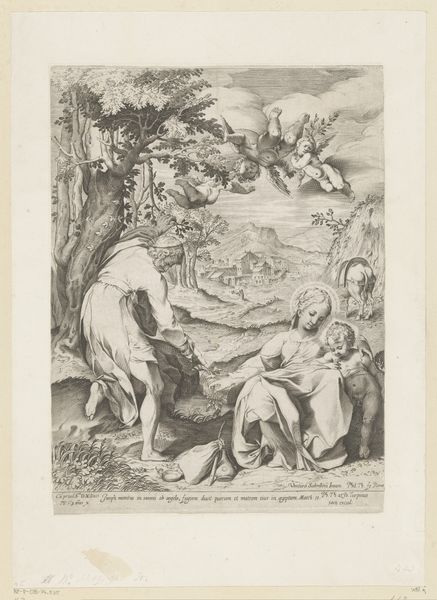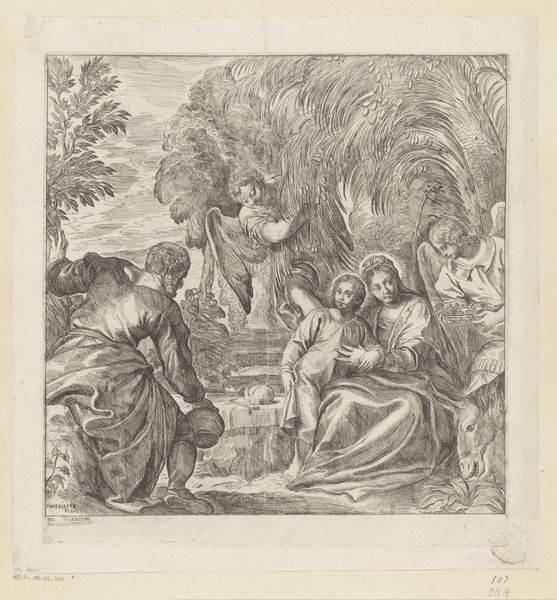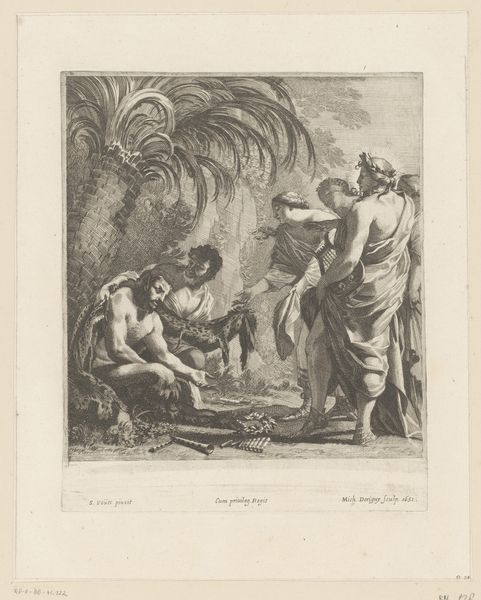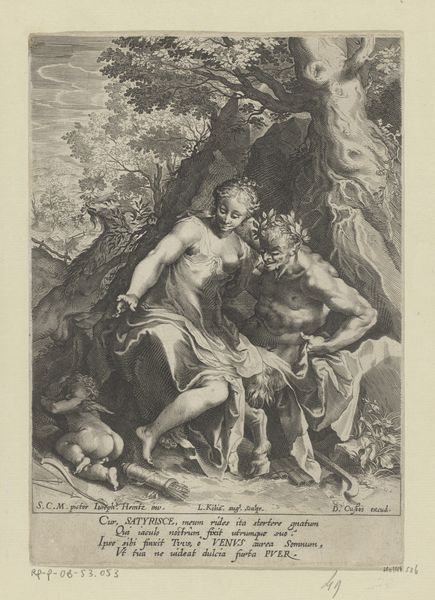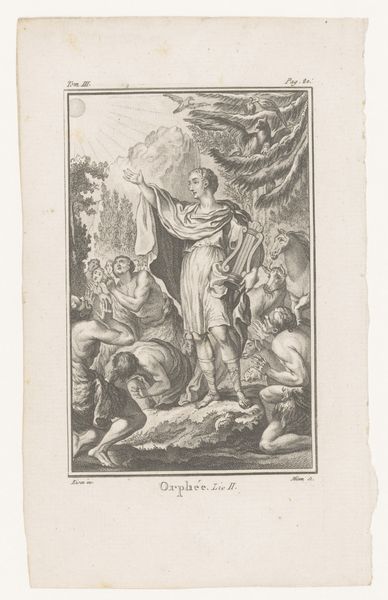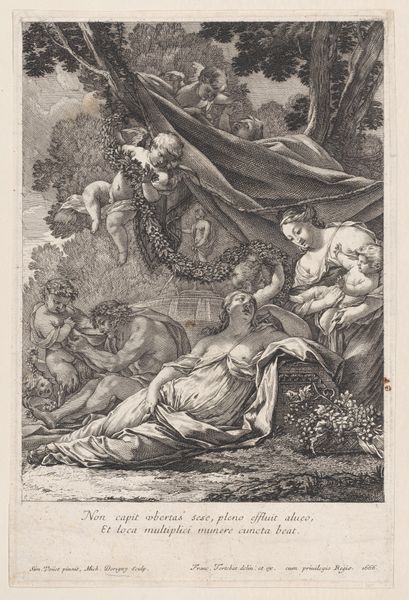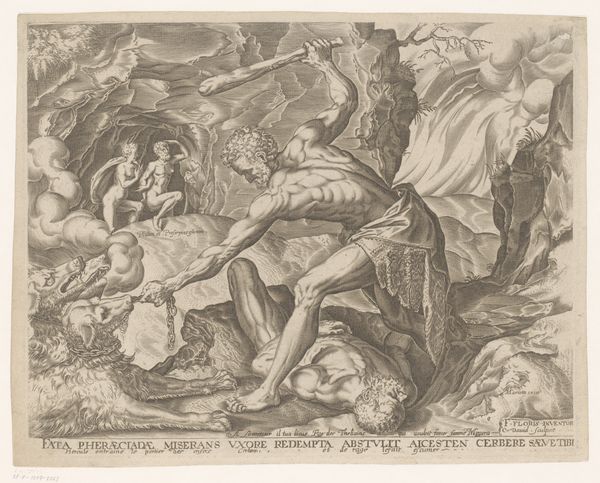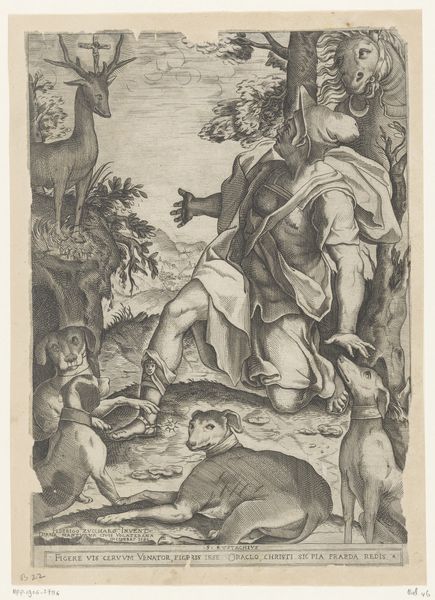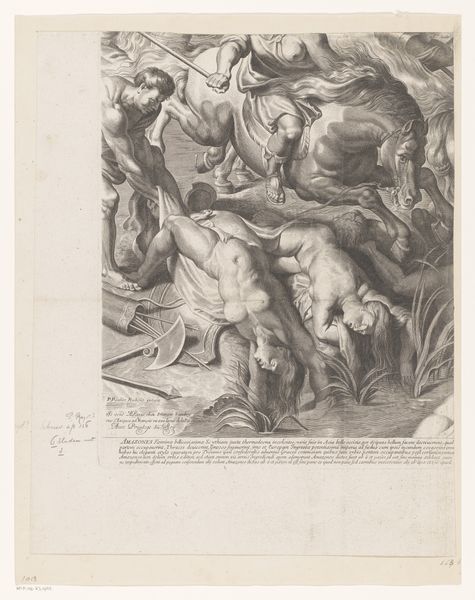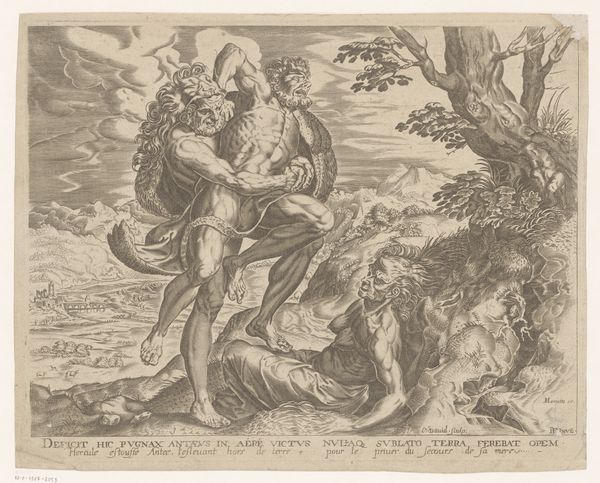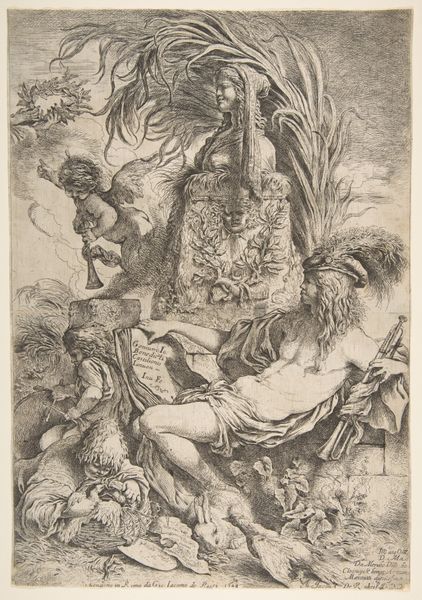
Dimensions: height 273 mm, width 238 mm
Copyright: Rijks Museum: Open Domain
Orazio de Santis created this print, "Christ appears to Mary Magdalene" sometime in the late 16th century. This image was achieved through the process of engraving, where the artist etches lines into a metal plate, applies ink, and presses it onto paper. Consider the labor invested in this image. The engraver, likely working in multiples, used specialized tools, patience, and skill to create the image we see here. The quality of the print depends on the control of line, which in turn allows the modulation of light and shade. Note how the lines create the folds in the robes, the texture of the tree bark, and even the soft expression on Mary Magdalene's face. Engraving was a crucial technology in the early modern period, enabling the wide distribution of images and ideas. It was a bridge between artistic invention and the burgeoning capitalist system. By understanding its method of production, we recognize the print not just as a religious scene, but as a commodity embedded in the social context of its time.
Comments
No comments
Be the first to comment and join the conversation on the ultimate creative platform.


